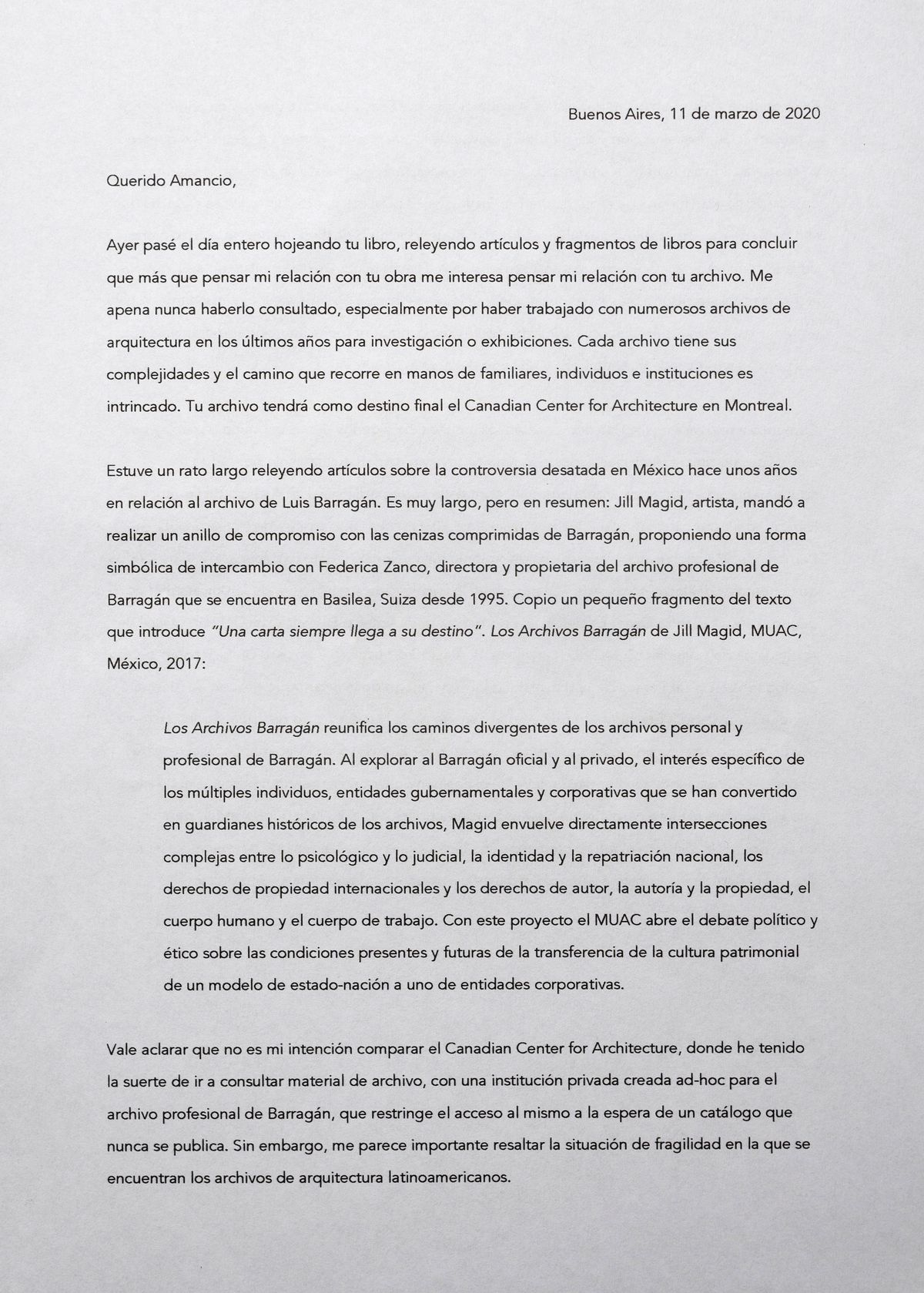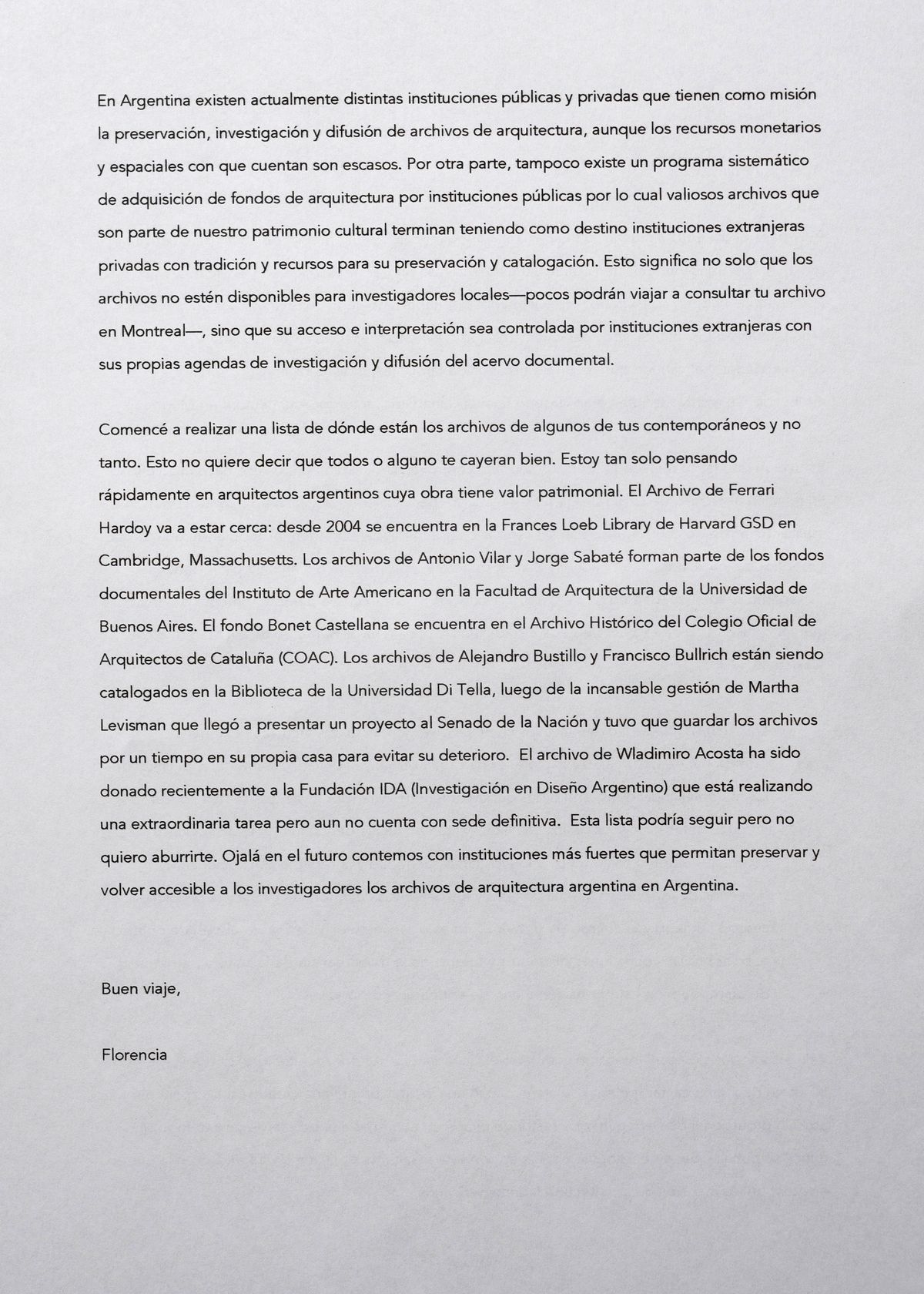Yesterday, I spent the whole day leafing through your book, re-reading articles and book excerpts until I finally concluded that I am more interested in thinking about my relationship with your archive than I am in thinking about my relationship with your work. I’m sorry I never consulted it, considering I have worked with numerous architectural archives in recent years for different research and exhibition projects. Each archive has its complexities, and its journey in the hands of family members, individuals, and institutions is intricate. Your archive will have as its final destination the Canadian Centre for Architecture in Montréal.
I spent a long time re-reading articles about the controversy unleashed in Mexico a few years ago in relation to the Luis Barragán archive. It’s a long story, but in short: Jill Magid, an artist, had an engagement ring made from Barragán’s compressed ashes, proposing a symbolic form of exchange with Federica Zanco, director and owner of Barragán’s professional archive, kept in Basel since 1995. Below, I copy a small fragment of the text that introduces Jill Magid’s exhibition, “A letter always arrives at its destination”. The Barragán Archives, at MUAC (Museo Universitario Arte Contemporáneo), Mexico, 2017:
“A letter always arrives at its destination”. The Barragán Archives brings together the divergent strands of Barragán’s personal and professional archives. By exploring the official and private Barragán, the specific interests of the multiple individuals, government bodies, and corporate institutions that have become custodians of the archives, Magid encompasses the complex intersections between the psychological and the judicial, identity and national repatriation, international property rights and copyright, authorship and ownership, and the human body and the body of work. With this project, the MUAC opens up a political and ethical debate on the current and future conditions of the transfer of cultural heritage from a nation-state model to one of corporate institutions.
Let me clarify that it is not my intention to compare the Canadian Centre for Architecture, which I have been lucky enough to visit to consult archival material, with a private institution created ad-hoc for the professional archive of Barragán that restricts access to it while anticipating a catalogue that keeps not coming out. However, I think it is important to highlight the fragile situation in which Latin American architectural archives find themselves.
In Argentina, there currently exist various public and private institutions whose mission is the preservation, research, and dissemination of architectural archives, although the monetary and spatial resources available to them are scarce. However, there is no systematic programme for the acquisition of architectural collections by these institutions, and valuable archives that are part of our cultural heritage end up being sent to foreign private institutions with the expertise and resources needed for their preservation and cataloguing. These archives not only become unavailable to local researchers—few will be able to travel to consult your archive in Montréal—but their access and interpretation become controlled by foreign institutions that have their own agendas with regard to the research and dissemination of documentary heritage.
I started a list of where the materials of some of your contemporaries—and some, not so contemporary—are located. This doesn’t mean that you liked all or any of them. I’m just quickly thinking of Argentinean architects whose work has heritage value. The Jorge Ferrari-Hardoy Archive will be close by: since 2004, it is located at the Frances Loeb Library of the Harvard GSD in Cambridge, Massachusetts. The archives of Antonio Vilar and Jorge Sabaté are part of the documentary collections of the Institute of American Art at the Faculty of Architecture of the University of Buenos Aires. The Bonet i Castellana fonds are in the Historical Archives of the Architects’ Association of Catalonia (COAC). The archives of Alejandro Bustillo and Francisco Bullrich are being catalogued at the Universidad Di Tella library, after the tireless efforts by Martha Levisman—who even submitted a proposal to our Senate and had to temporarily keep the archives in her own house to avoid their deterioration. Wladimiro Acosta’s archive has recently been donated to the IDA Foundation (Investigación en Diseño Argentino), which is carrying out an extraordinary task but does not yet have a definitive venue. This list could go on, but I don’t want to bore you. Hopefully, in the future we will have stronger institutions that will allow us to preserve and make the archives of Argentinean architecture accessible to researchers in Argentina.
Have a good trip,
Florencia
Buenos Aires, 11 March 2020

